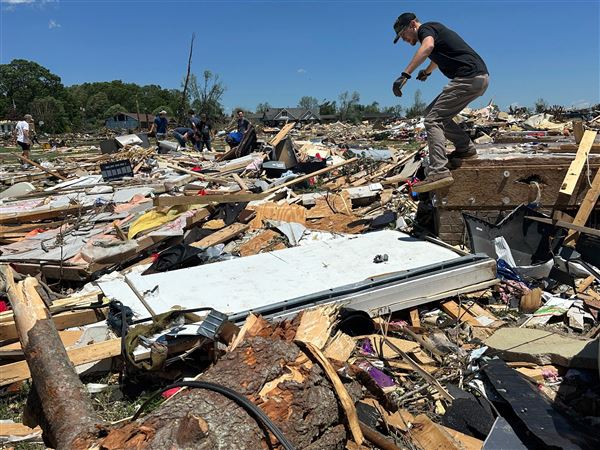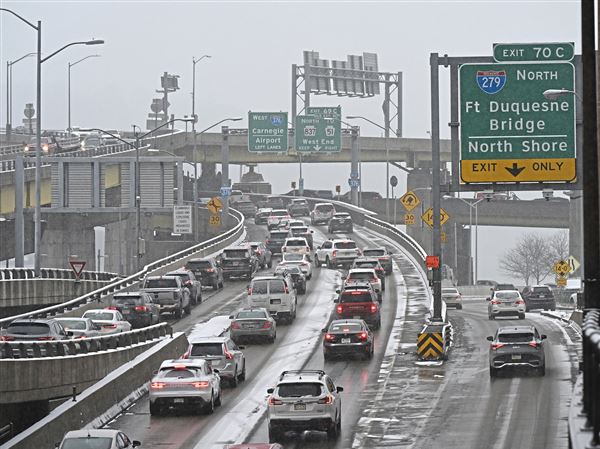Jefferson Provost relies on his home Internet service more than the average Pittsburgher.
Mr. Provost lives in Dormont but is currently finishing up his doctorate in computer science at the University of Texas -- using his home Internet connection to conduct videoconferences and work remotely on computers in Austin, Texas.
When he heard last year that Verizon's high-speed fiber-optic Internet service was coming to the Pittsburgh area, he began to research it and found one piece of troubling information: In the course of installing its new FiOS fiber-optic network, Verizon was removing the old copper phone wires that connected a house to the old network.
The copper wires, which also connect users to the Internet through dial-up or Digital Subscriber Line (DSL) services, are essentially redundant once Verizon installs the FiOS network, which can provide phone, Internet and the FiOS television service that is expected to come to Western Pennsylvania later this year.
Mr. Provost's concern applied mainly to what would happen to his phone during a power outage. "We liked the idea of having our landline stay up in a power failure," he said. "The FiOS service stays up, but only for as long as the batteries last in the network terminal in the basement."
The policy has sparked fierce reactions in the blogosphere, with some techies concerned that the removal of the copper means "no turning back" if FiOS is unsatisfactory or becomes too expensive. An Associated Press story ran across the country last month, often with the headline "Verizon's copper cut-off traps customers."
But according to Verizon, all the hubbub is much ado about nothing.
"This hasn't been an issue with really anybody," said Lee Gierczynski, a Verizon spokesman. "Nobody is clamoring to go back to copper."
First of all, said Mr. Gierczynski, Verizon isn't removing its whole copper network -- just the wire, known as the "drop," that runs between the main phone line and the customer's home.
If a customer sells the home, the new owner could request that the copper line be reinstalled at no charge, he said. And if an existing customer wanted the copper line reinstalled, Mr. Gierczynski said they also could have it done at no charge, excluding any early termination fees that they might owe on a FiOS contract.
During a power outage, he said, the system will run on a backup battery that lasts for seven hours, with an additional hour of battery power that the customer can activate in an emergency.
If new FiOS customers want to keep their copper wires, they also can do so, though, "Of course, we'll try to persuade the customer to remove the copper and go with the fiber," said Mr. Gierczynski.
But if the customer insists, Verizon will leave the copper drop and the wiring box in place, he said, noting that if the copper lines are buried in the ground, as they are in many new subdivisions, Verizon is not planning to touch them anyway.
The company is removing the copper because "primarily it just improves the aesthetics to have fewer wires in the air," said Mr. Gierczynski.
But Matt Cooper, research director at the Consumer Federation of America, believes that the company has another motive as well.
Federal law mandates that incumbent telephone companies, such as Verizon, have to lease their copper wires to rival companies.
But those rules don't apply to fiber-optic cable networks.
Not only are copper networks expensive to maintain, but the copper "poses a competitive threat," said Mr. Cooper. "Other people have more rights to the copper than the fiber."
The Federal Communications Commission currently is examining its policies on removal of the copper wires.
As for Mr. Provost, he asked the technician who installed his FiOS Internet service last August about keeping the copper wire in place, and found out that, for whatever reason, the company wasn't planning on removing it anyway.
Before long, Mr. Provost's concern about service during a power outage became moot: He canceled his landline altogether in favor of an Internet-based phone service.
First Published: August 3, 2007, 12:45 a.m.

















